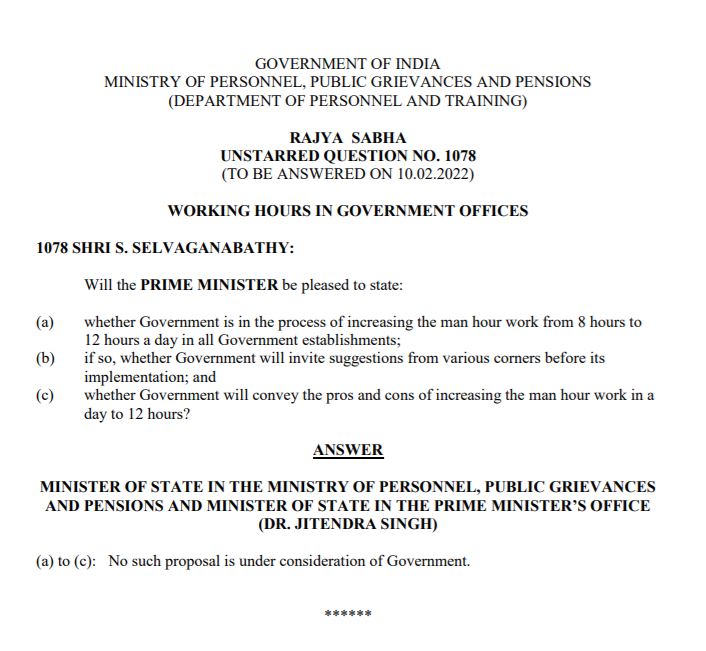Ministry of Health and Family Welfare has issued Revised Guidelines for Home Isolation of Mild, Asymptomatic COVID-19 Cases.
The guidelines are in supersession to the guidelines issued on the subject on 2nd July, 2020.
As per the guidelines, the patients who are clinically assigned to be mild/asymptomatic are recommended for home isolation.
ASYMPTOMATIC CASES/MILD CASES OF COVID-19
The asymptomatic cases are laboratory confirmed cases not experiencing any symptoms and having oxygen saturation at room air of more than 94%.
Clinically assigned mild cases are patients with upper respiratory tract symptoms (&/or fever) without shortness of breath and having oxygen saturation at room air of more than 94%.
PATIENTS ELIGIBLE FOR HOME ISOLATION
The patient should be clinically assigned as mild/ asymptomatic case by the treating Medical Officer.
Patients suffering from immune compromised status (HIV,Transplant recipients, Cancer therapy etc.) are not recommended for home isolation and shall only be allowed home isolation after proper evaluation by the treating medical officer.
Such cases should have the requisite facility at their residence for self-isolation and for quarantining the family contacts.
A care giver should be available to provide care on 24×7 basis.A communication link between the caregiver and hospital is a prerequisite for the entire duration of home isolation.
Elderly patients aged more than 60 years and those with co-morbid conditions such as Hypertension, Diabetes, Heart
disease, Chronic lung/liver/ kidney disease, Cerebro-vascular disease etc shall only be allowed home isolation after proper evaluation by the treating medical officer.
The care giver and all close contacts of such cases should take Hydroxychloroquine prophylaxis as per protocol and as prescribed by the treating medical officer.
In addition, the guidelines on home-quarantine for other members available at [ Read here] shall be also followed.
INSTRUCTIONS FOR THE PATIENT
Patient must isolate himself from other household members, stay in the identified room and away from other people in home, especially elderlies and those with co-morbid conditions like hypertension, cardiovascular disease, renal disease etc.
The patient should be kept in a well-ventilated room with cross ventilation and windows should be kept open to allow fresh air to come in.
Patient should at all times use triple layer medical mask. Discard mask after 8 hours of use or earlier if they become wet or visibly soiled. In the event of care giver entering the room, both care giver and patient may consider using N 95 mask
Mask should be discarded only after disinfecting it with 1% Sodium Hypochlorite.
Mask should be discarded only after disinfecting it with 1% Sodium Hypochlorite.
Don’t share personal items with other people
Follow respiratory etiquettes all the time.
Frequent hand washing with soap and water for at least 40 seconds or clean with alcohol-based sanitizer.
Ensure cleaning of surfaces in the room that are touched often (tabletops, doorknobs, handles, etc.) with 1% hypochlorite solution
Patient must take rest and drink lot of fluids to maintain adequate hydration.
Self-monitoring of blood oxygen saturation with a pulse oximeter is strongly advised.
Oximeter Recording
Turn on the Pulse Oximeter. Ensure digits are visible in the screen
Insert middle finger correctly within the Oximeter. Allow few seconds for the Pulse Oximeter to detect the pulse and display the oxygen saturation (SpO2)
Take the reading and fill in the Form-1
◊ Normal: SpO2 should be 95% or above
◊ If SpO2 below 95 %, then person should be immediately referred to the supervisor/medical officer
• Clean finger with sanitizer or alcohol-based wipe for every person before use
• To avoid wrong reading, do not test on fingers with nail polish
The patient will self-monitor his/her health with daily temperature monitoring and report promptly if any deterioration of symptom as given below is noticed.
THERMAL SCREENING
Turn on the THERMAL GUN and ensure it records correct temperature
• Keep the THERMAL GUN at the palm’s distance (6 inches) from the forehead and press the button to record the temperature
• Read the ”Number on the Screen” and fill the reading in FORM-1. Repeat this exercise for all family members
• FEVER: Any temperature of 100.4 F (38º Celsius) or greater is considered as fever
• Clean THERMAL GUN with sanitizer or alcohol-based wipe when the GUN is handed over to someone else

